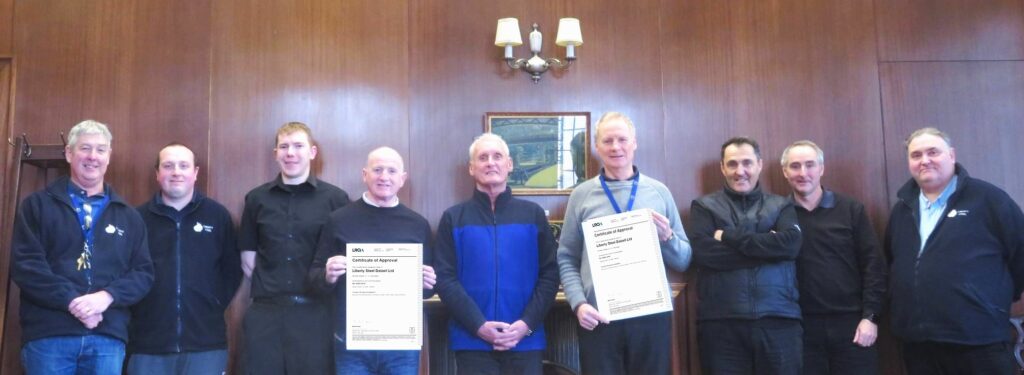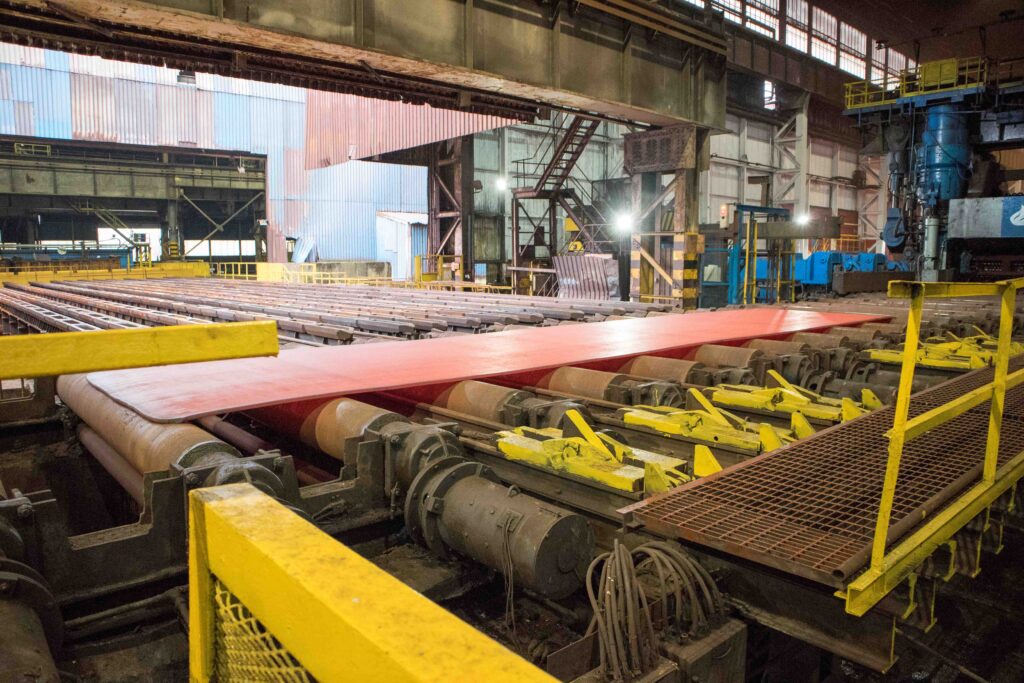Whyalla featured on hit documentary series Australian Story
In September 2018, the ABC’s hit documentary series Australian Story tracked ...

Safety has always been a paramount concern at Dalzell, and this accreditation reinforces the company’s dedication to continuous improvement in safety performance. Through a comprehensive annual review, the team explored avenues to minimise risks, leading to the decision to pursue ISO 45001 accreditation to support their philosophy of continual enhancement.
We spoke with Clark Dalziel, QA Manager at LS Dalzell, about this accreditation and the huge work the team did to make it happen.
– What steps did your team take to secure ISO 45001 accreditation?
– First, we identified the requirements of ISO 45001 and how this differed from the management system already in place. Then we considered the commonality of ISO 45001 with other management systems (9001, 14001) and concepts of approaches identified in structures such as the Health & Safety Executive (H.S.E), IOSH, and NEBOSH and the 15 principals’ approach. We conducted a clause-by-clause gap analysis, developed action plans, and systematically prioritised and worked through them via regular progress meetings. Created high-level procedures that aligned with ISO Annex SL structure. We engaged with LRQA, our existing management system assessors, and reconsidered how our local procedures and working practice fitted into group policies and standards.
– Who played a key role in the accreditation process, and how were various departments or teams involved?
– This was truly a multi-functional effort, and accreditation could not have been achieved without a common goal and significant contributions from numerous colleagues in each department. Key contributions were provided by Our Managing Director, Gordon MacRae, who provided the common goal and asked awkward questions. Our Plant Manager, Willie Wilson, provided the direction to keep the plan on track and was also responsible for driving policy & cultural changes.
I personally guided the group on the requirements of the new management system and its structure. Our operations function was led by Stevie Tominey and supported by our Operations Managers David Mulvey, Iain Hastie, and Jim Allison. They, alongside our shift managers and team leaders, reviewed current practice, implemented improvements in operational risk assessments and safe working procedures and were responsible for rolling out new training programmes. Willie McWhinnie and Calum Graham as our Engineering Managers, along with Charlie McGinty and Paul Kane as section engineers reviewed and condensed our legacy engineering documentation whilst at the same time, enhancing our compliance traceability and preventative maintenance schedules.
We would also like to thank GFG and LSUK senior management for their support and provision of business standards and gap analysis templates.
On the photo below – LS Dalzell Implementation team.
From R to L: Compliance and Management Systems Manager Clark Dalziel, Mechanical Section Engineer Charlie McGinty, Engineering Manager Calum Graham, Plant Manager Stevie Tominey, Business Development Manager Willie Wilson, Operations & Training Manager Jim Allison, Operations Managers Iain Hastie (Cold Processes) and David Mulvey (Hot Processes), Engineering Projects Manager Willie McWhinnie.

– What were the challenges encountered during the implementation of ISO 45001, and how were they addressed?
– One challenge was to consolidate the previous functional orientation of our OH&S management system and to create a centralised structure. We also had a legacy risk assessment / safe working procedure ‘mountain’ of over 3,000 documents that had to be addressed. This was reduced to a manageable level by re-evaluation and condensing each of the Management of Work Packs whilst simultaneously archiving legacy information for potential future reference. This additionally provided a great opportunity to refresh our training & health surveillance resulting in updated procedures and new training plans being implemented.
– Looking ahead, what are the company’s strategies for maintaining and continuously enhancing its Occupational Health & Safety Management System?
– Regular meetings to check progress and ensure no drift in conformance, continual refinement of our OH&S Management System structure, improvement of RA/SWP’s. We are planning to incorporate our OH&S management system requirements into our standard business practice rather than a centrally managed process.
– Could you share specific instances or examples illustrating how LIBERTY Steel Dalzell has seen improvements in safety performance since the implementation of the ISO 45001 OH&S management system?
– We are very proud of our LS Dalzell safety performance with a 12-month rolling Lost Time Injury Frequency rate and recordable injury frequency rate of zero. The last LTI was 2 years ago, and prior to that, the site had achieved 5 years with zero LTIs. The objective of gaining ISO 45001 was to further support our ongoing target of zero LTIs. The 45001 journey has provided us with a more robust health and safety management system, has broadened the depth and breadth of OH&S knowledge across the organisation and ultimately, has enhanced consultation and participation.
– What advice or insights would you give others based on your experience?

Leave A Reply